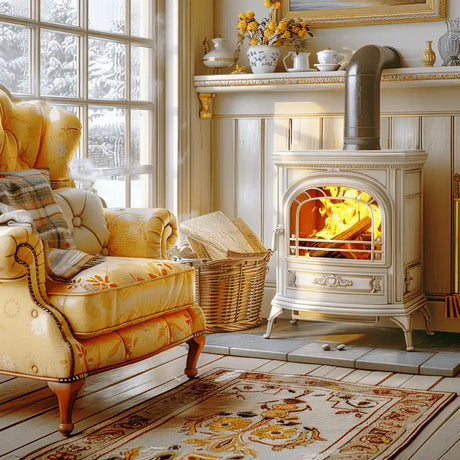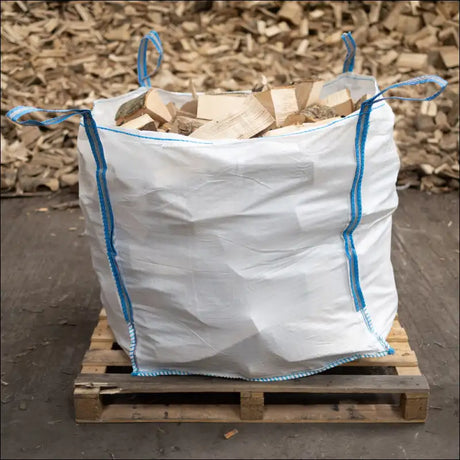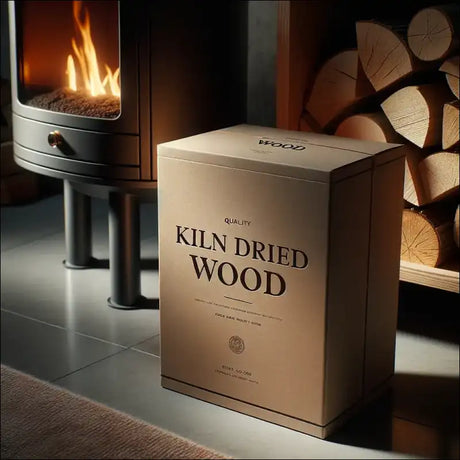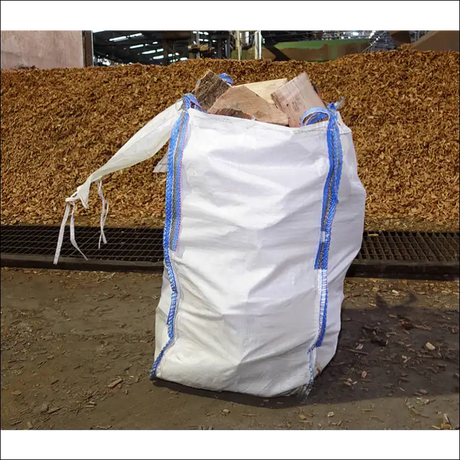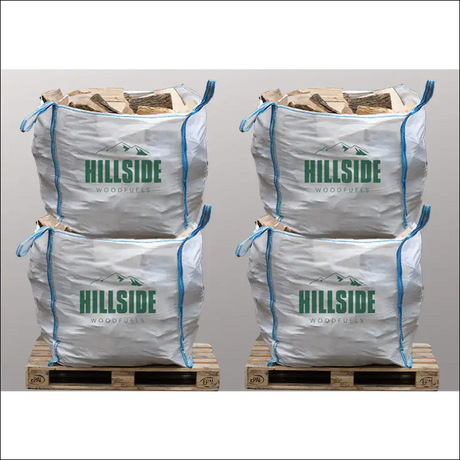As the chilly winds of autumn begin to whisper through the trees and the prospect of cosy nights by the fire beckons, it's time to think about making the most of your firewood. Whether you're a seasoned wood-burner or new to the world of traditional heating, these 15 clever hacks will help you squeeze every last bit of warmth from your logs. So, grab a cuppa and let's dive into the world of firewood efficiency!
1. Choose the Right Wood
Not all wood is created equal when it comes to burning efficiency. Hardwoods like oak, ash, and beech are your best bet for long-lasting, high-heat fires. These dense woods burn slowly and produce more heat per log than their softwood counterparts.
For a deeper dive into wood types, check out our guide on choosing the right logs for wood burners.
2. Invest in Kiln-Dried Logs
While it might seem tempting to use freshly cut wood or logs that have been naturally seasoned, kiln-dried logs are the gold standard for efficiency. They have a significantly lower moisture content, typically around 20% or less, which means they'll burn hotter and cleaner.
Learn more about the advantages of kiln-dried wood for your fireplace.
3. Store Your Wood Properly
Proper storage is crucial for maintaining the quality of your firewood. Keep your logs off the ground and protected from rain and snow. A well-ventilated log store or shed is ideal, allowing air to circulate and prevent moisture build-up.
Discover the dos and don'ts of storing kiln-dried logs.
4. Use a Moisture Meter
Invest in a simple moisture meter to check the moisture content of your logs. Aim for wood with less than 20% moisture content for optimal burning efficiency. This small tool can save you a lot of frustration and improve your fire's performance dramatically.
5. Build Your Fire the Right Way
The way you build your fire can significantly impact its efficiency. Start with a layer of kindling, then add smaller logs, and finally your larger logs. This method, known as the top-down burn, allows for better airflow and a more consistent burn.
6. Don't Overload Your Stove
It's tempting to stuff your wood burner full of logs, but this can actually reduce efficiency. Overloading restricts airflow, leading to incomplete combustion and wasted fuel. Instead, add logs gradually as needed to maintain a steady burn.
7. Use Fire Starters Wisely
While firelighters can be helpful, particularly on chilly mornings when you're in a rush, they're not always the most efficient option. Consider using natural alternatives like pinecones or eco-friendly fire starters to get your fire going without unnecessary chemicals.
Explore our range of eco-friendly firelighters for a greener start to your fires.
8. Maintain Proper Airflow
Ensure your wood burner's vents are clear and properly adjusted. Good airflow is essential for efficient burning. Start with the vents fully open when lighting your fire, then gradually close them as the fire establishes itself to control the burn rate.
9. Clean Your Chimney Regularly
A clean chimney improves draft and reduces the risk of chimney fires. Aim to have your chimney swept at least once a year, or more if you use your fire frequently. This not only improves efficiency but also ensures safety.
10. Use a Stove Fan
A stove fan sits on top of your wood burner and uses the heat from the stove to power its motor. As it spins, it circulates warm air around the room, helping to distribute heat more evenly and potentially reducing the amount of wood you need to burn.
11. Insulate Your Home
While not directly related to your firewood, good home insulation can dramatically improve the efficiency of your heating. Properly insulated walls, lofts, and windows will help retain the heat from your fire, meaning you'll need to burn less wood to maintain a comfortable temperature.
12. Consider Using a Wood Moisture Barrier
If you're storing wood outside, consider using a wood moisture barrier or cover. This allows air to circulate while keeping rain and snow off your woodpile, helping to maintain the low moisture content of your kiln-dried logs.
13. Rotate Your Wood Stock
Use the "first in, first out" principle when storing and using your firewood. This ensures that older wood gets used before it can absorb moisture or deteriorate, maintaining the overall quality of your woodpile.
14. Use Smaller Logs for Quick Heat
When you need heat quickly, such as when you first come home on a cold day, use smaller logs. They'll catch fire more quickly and release heat faster than larger logs. Save your bigger logs for overnight burns or when you want a long-lasting fire.
15. Learn to Bank Your Fire
Banking your fire involves arranging the burning logs and embers in a way that allows the fire to smoulder slowly overnight. This technique can help maintain heat through the night and make it easier to restart your fire in the morning, reducing the amount of wood needed to reheat your space.
By implementing these clever hacks, you'll not only maximize the efficiency of your firewood but also create a more comfortable and cost-effective heating solution for your home. Remember, efficient wood burning isn't just about saving money – it's also about reducing your environmental impact and creating a more sustainable home heating practice.
So, as the leaves begin to turn and the nights draw in, put these tips into practice and enjoy the warm, comforting glow of an efficient wood fire. After all, there's nothing quite like curling up with a good book in front of a crackling fire on a crisp autumn evening. Happy burning!


